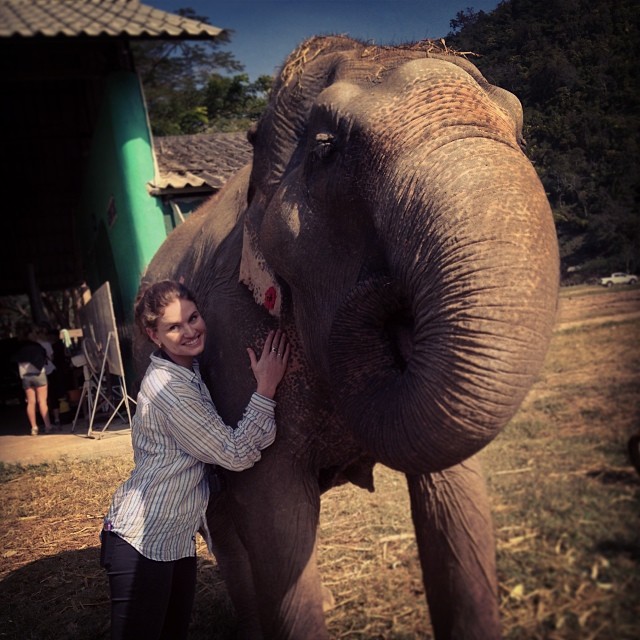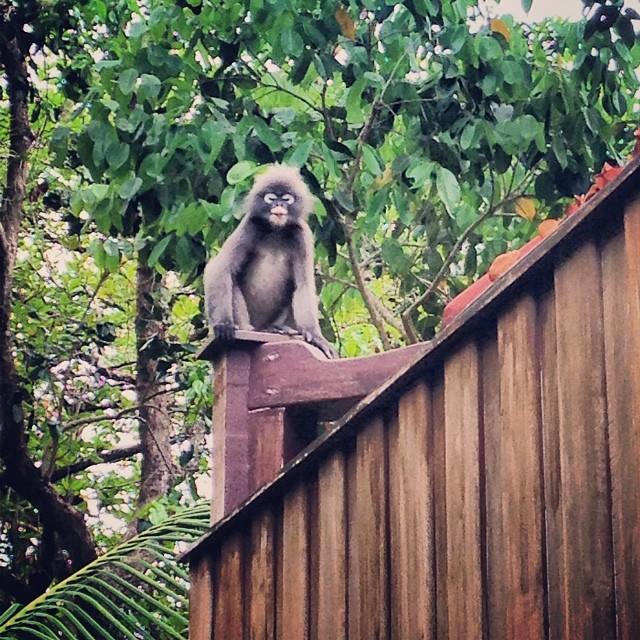Last week, we interviewed Nicole Caldwell, co-founder and CEO of Better Farm, a 65-acre sustainability campus, organic farm and artists' colony serving as a blueprint for environmentally conscious living. In her interview, Nicole told us about her career path, inspirations, and personal obstacles, and gave us some background on her upcoming book release. This week, we're thrilled to share a chapter of that very book in an early preview for the WhyWhisper community. Read the chapter below and let us know what you think. Have questions? Comment below or reach out via Facebook or Twitter!
"Chapter Four: Better Business Practice" from Better: The Everyday Art of Sustainable Living
We are living through an era of record population that ironically coincides with record isolation. Our jobs, along with our addictions to social media and television, exacerbate this issue. We have an “Every Man for Himself” mentality in the dominant culture of the US that encourages us to go it alone - either truly on our own or as an independent family structure. We treat our shopping experiences, jobs and neighborhoods as separate pieces further distinguished as somehow apart from our personal lives. In our isolation, we gobble up resources faster than they can be replenished. All our independent activities and enterprises have added up: On a global scale, our expenses (natural resource use) surpass our incomes (how quickly resources can be renewed in nature) by 150%.
For humans' place in this world to be more sustainable, more loving and more fulfilling, we have to change how we do business on Planet Earth. Let's stop pretending that we're not connected to the businesses we patronize in the communities where we live. And let’s not forget that the businesses we patronize must also do their part to live in agreement with the landscape.
What if we stopped justifying our apathy and instead demanded that business ethics mirror the ethics we want our children to learn? What if we insisted the developers making our neighborhoods took the environment into consideration? What if our communities were extensions of ourselves that we played an active role in shaping and supporting?
All this might bridge the divides we have. It might help us feel connected. And it just might heal so many of the social ills that plague us.
Involvement isn't so far-fetched. Time and again we have seen businesses spring up founded on morals, ethics, philanthropy and environmental empathy. There are ways to poke through a seemingly universally corrupt system. To choose love over greed and to make it work. Business owners, entrepreneurs and start-ups all over the world have begun a new trend of corporate community and environmental engagement that enhance the venture's relationship to the neighborhood in which it is based.
No small part of the disconnect we experience stems from our limited relationships with our communities and local businesses. Examining how businesses can be fused with their neighborhoods offers insights into ways we might all become more actively engaged with our local economies, shopping habits and environments. The glue connecting all these points is a shared vision of a better life for business owners, consumers, children, neighbors, friends and even the landscape.
Sustainability in any setting must first and foremost take the local environment into account. What businesses and communities in Northern New York do to be more sustainable will differ significantly from counterparts in New Mexico, Bangkok or Newfoundland. Local ecology should dictate the methodology, materials and design of businesses located therein. How we interact, care for, take from and nurture the natural world around us must adhere to the local land base.
To identify the needs of a community, you have to put your feet to the pavement. It is only by listening to people's stories, experiencing the sights, sounds and smells of a place and breathing the same air that we can empathize with a space, person or landscape. Smart entrepreneurs know that analyzing data alone won't make them innovators; instead, they know to bury themselves in the questions of how they can improve upon life in their communities in a way that also speaks to their business models.
In 2001, University of Illinois researchers Frances Kuo and Bill Sullivan conducted a study to compare the lives of women living in a Chicago housing development. Half of the test subjects lived in apartment buildings with views of greenery. The other half lived in identical buildings without those green views. Kuo and Sullivan found that buildings with high levels of vegetation outside had 48% fewer crimes against property, 56% fewer violent crimes and less domestic violence.
Of 200 residents interviewed, 14% of women with barren views reported hitting their children in the last year. Only 3% of women in green areas said the same. Similarly, women enjoying views of trees outside reported fewer violent acts toward their partners than those living without trees. Residents living with green views also demonstrated better relationships with their neighbors: more visitors, more socialization, more knowledge of who's who and a stronger sense of community.
Developers armed with such research findings can fundamentally change social dynamics among residents in their communities. Imagine marketing houses and apartments with proven abilities to reduce crime, isolation, depression and violence.
When our corporate ventures or organizations grow out of a community's needs, our mission becomes part of a higher power and larger body of work. When this happens, employees and customers alike are drawn to the vision. We see things firsthand and experience all that life offers to us. We open ourselves up to our communities and each other.
There isn't any reason for business practices to be separate from neighborhood outreach. A vibrant and successful small business will incorporate a community's identity into its very core. If a business owner can envision a better community and have a carefully orchestrated action plan for facilitating change, then there is a strong relationship that will allow for regeneration and evolution.
To establish itself within a community, a company must assess its neighborhood's needs and file those down to efforts that merge business practices with the community. A farm may wish to donate to the local food pantry, while an office-supply store may give school supplies to local children. Smart collaboration is more important than a misguided laundry list of things a neighborhood needs.
Bennu, a green product development and marketing company focused on recycling, organizes an annual “Greenpacks for Great Kids” online backpack drive. The company donates $5,000 worth of eco-friendly backpacks to children living in low-income, New York City communities.
Vermont-based Bove's Cafe and pasta sauce company partnered with Hannaford Supermarket to donate 1,000 boxes of pasta and more than 1,000 jars of pasta sauce to the Chittenden County Emergency Food Shelf. Bove's took what it knows how to do - feed people - and used that skill to help the community.
Bob's Red Mill Natural Foods founders Bob and Charlee Moore in 2011 donated $5 million to Oregon State University in order to establish a research center focused on the nutritional value of whole-grain foods. Another $1.35 million was donated by the couple to the National College of Natural Medicine as help in the fight against childhood obesity.
Maple Leaf Adventures, a boutique expedition company based out of Victoria, British Columbia, annually donates one percent or more of sales to coastal conservation work and science. These funds have supported the prevention of illegal trophy hunting of grizzly bears, research on seabirds and white spirit bears and helped to protect wild Pacific salmon. Each of these causes is near and dear to the hearts of the company's owners; Maple Leaf Adventures relies on this coastal environment for ecotourism.
Communities demonstrate needs through certain indicators. How do people handle their garbage or treat their front lawns? Is the local school struggling? Is natural landscape incorporated into the scenery or banished from it? Are children playing? Are public spaces tidy? Are there any public spaces at all? It's easy enough to explore an area by researching basic information about the local economy, housing, environmental degradation or bounty, topography, transportation, public health and basic demographics. But so much can be learn by actually entering the environment: hike, kayak, walk the trails and explore the old railroad tracks.
This is the beginning. But we have to look even closer, at the canvas behind the neighborhood.
The land that's supporting businesses and homes is the backdrop to all we do within it. When creating a business model, we are wise to consider the land what it can realistically support. We must consider the people who depend on that land whether they realize it or not. This is not some fall-by-the-wayside topic; it's everything. How can my business support the local land base? How can my company help to clean up the local ecosystem or establish conservation efforts? How can my office produce zero waste? How can I use renewable resources to power, heat and cool the buildings I use? How does my presence in this location enhance the natural landscape that makes it possible for me to live and work here?
Companies should not continue to produce things that hurt either the environment or community. Enough technology and information is accessible now for us not to need things like genetically selective weed killers or toxic toilet bowl cleaners. There is no longer any excuse to use polystyrene foam containers, paper towels or paper napkins. The boom in small farms and the technology we have to communicate with each other leave little excuse for our restaurants not to incorporate local ingredients. Our office kitchenettes don't need throwaway cups or plastic stir straws. There's no reason to buy these products, offer them up for employee use, and there's no reason to sell them. It's unconscionable to not compost food scraps when we know how beneficial they can be. We can start companies that don't create products that harm the land base. We can appeal to the companies we work for to green their practices.
As consumers, we have power. We increase or decrease demand by buying or not buying. This is the only language many companies know. If we all stopped buying paper towels or factory-farmed meat, what business owner in her right mind would continue to try to sell them?
People utilized social media in 2010 to create a massive campaign against Nestlé for its use of Indonesian palm oil in its products. Initially launched by Greenpeace, the Facebook-driven campaign provided information on how demand for palm oil in Indonesia spurred growers there to illegally cut down endangered rainforests in order to make more growing space for palm. A petition was passed around, but consumers got in on the game directly by writing their own letters to Nestlé and posting on the company’s own social media sites about the issue. Consumer action went viral throughout the Internet, and Nestlé responded with a pledge to source 100% of its palm oil from certified-sustainable sources by 2015. It met that pledge a full two years early, in 2013.
Visitors to Sea World locations in the US dropped by 13% in the first quarter of 2015, following the release of the controversial documentary "Blackfish." The film, which outlines a number of violent outbursts of whales against their trainers, explores the complex intelligence of killer whales and suggests the mammals are unfit for captivity. Public outcry against the theme park resulted in free-falls for Sea World’s numbers. Stocks fell 50% in six months during 2013, and the park’s CEO resigned in early 2015. The dramatic drop in ticket sales has meant a scramble for Sea World execs to rebrand the company and to put an onus on rehabilitation and education over tricks and captivity.
A 2005 McKinsey & Company study found that up to 8% of consumers had stopped shopping at Walmart because of negative press about the company’s environmental practices, labor policies and methods for beating out competition. In response, that same year Walmart’s CEO announced a sustainability strategy that would allow the company to in the near future “be supplied 100 percent by renewable energy; to create zero waste; and to sell products that sustain our resources and the environment.”
We are alive during some of the most exciting times. A huge majority of the people creating start-ups want to make a positive contribution to the world. And luckily for them, a business model that incorporates philanthropy is infinitely more attractive to investors. Courageous leaders who insist on higher standards are rewarded tenfold by consumers.
Actor Paul Newman launched Newman's Own in 1982 by passing out wine bottles filled with homemade salad dressing to his friends. In the three decades since, the company has earned more than $400 million - all of which has been donated. Every after-tax dollar earned by the company goes directly to Newman's Own Foundation, which distributes the cash throughout the world to various charities.
Newman's has inspired countless other corporations to follow suit. Mike Hannigan, one such company's founder, had his moment of reckoning while reading over his own jar of Newman's pasta sauce. Hannigan got in touch with his business partner and the two men figured out a way to instill philanthropy into the core of their venture, Give Something Back Office Supplies.
Though it's a mega-chain, Chipotle is another great example of business practices being intertwined with community outreach and sensible principles. The corporation buys as much as possible from local farms within striking range of each franchise. Chipotle selects farms that are informed by their local land bases and utilize compassionate care for livestock.
Life is good, Inc. makes a ton of money selling merchandise depicting its now-famous stick figure emblem. The company has built charitable giving directly into its business plan, donating 10% of net profits to children in need. Life is good also sponsors festivals that give merchandise and profits to child-related charities and causes.
Since 1985 outdoor gear biz Patagonia has donated one percent of annual sales to environmental causes and preservation. But they've done more than that: in 2013, the company unveiled a new campaign called “The Responsible Economy.” This effort is to produce fewer items than in previous years and limit growth in order to put less stress on the environment. Patagonia's high-quality outdoor products are designed to ensure consumers can wear the same gear year after year. The company is single-handedly challenging the compulsive clothing shopping experience other businesses depend on.
The more a community understands an organization's positioning, the better the relationship will be. So aligning a business with one or two specific causes will benefit business owners and employees more than token contributions. This work doesn't have to be money-based, either. Any community will show more respect for business owners who get their hands dirty helping out with neighborhood cleanups or fish fries than some mogul who throws money at community issues.
Virgin Group founder Richard Branson is a billionaire who devotes most of his time to philanthropy. His chief effort is Virgin Unite, a nonprofit foundation with projects related to leadership and entrepreneurship. Branson has said in many interviews that healthy profits are inextricably linked to community support of a business’ services and management practices - and that employees want to work for businesses they believe in.
Steve Brockman, locally celebrated business owner of Expert Plumbing in Naperville, Illinois, regularly rolls his sleeves up to help his community. He works closely with Naperville Western DuPage Special Recreation Association, and has in the past built a parade float and organized a fundraiser for the group. And senior staff at Solihull Hospital in the UK annually show their appreciation to the rest of the staff by contributing during the hospital’s National Volunteers’ Week. Pitching in unpaid in the pharmacy department, meeting and greeting or helping with fundraising efforts are the higher-ups’ way of saying thank you to the people who put in the elbow grease every day to make the hospital run smoothly.
Notre Dame High School in Clarksburg, West Virginia launched a new initiative in 2015 called “Business Gives Back.” For that program, area business owners visit the school to talk with students about the making a difference in the community and the benefits of local businesses offering volunteer outreach.
There is growing evidence that our happiness is actually tied to local economy and policy. The Gross National Happiness (GNH) movement, started in Bhutan, factors happiness into new policies. A commission in that country reviews policy decisions, distribution of resources and studies the effect of these factors on the level of happiness within the country. Similar to environmental impact measures, governments that use GNH indexing adjust their policies according to the levels of happiness those policies will bring to communities.
Factors include the environment, culture, art, physical and mental health and basics like economics. So now, it's possible to chart how a government (in its own right an extension of a company profile) affects the well-being of the communities it is supposed to serve. It's a model worth considering in our own households, civic centers, states and counties.
When we seek business ventures that solely satisfy our greediest, most egocentric concerns, we limit ourselves. We feed an addiction to material gains and a hectic life that leaves us exhausted and unfulfilled. Living in this way only expands our sense of being alone. But opting for community-driven business practices enhances neighborhoods, increases happiness levels and is good for business’ bottom lines.
















